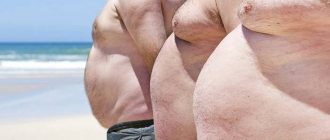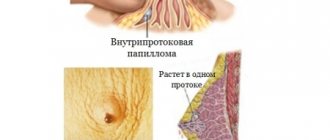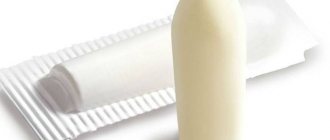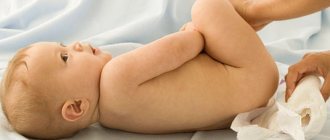Many people associate the word thrush with a white coating in the mouth of newborns. However, this disease can affect other organs and systems: the genital area, intestines, nails and skin. What types of thrush (another name for candidiasis) exist, what processes influence its appearance, and what should a person do to avoid contracting a fungal infection? Read about all this in order below.
Classification of candidiasis
Candidiasis is classified according to several criteria. The varieties of this disease are presented in the table:
| Types of classification | Types of thrush | Description |
| Depending on the place of appearance | Urogenital | The genitourinary system, vaginal and penis mucosa suffers |
| Visceral | Damage occurs to internal organs - the digestive and respiratory systems | |
| Oral cavity | Often occurs in children under one year of age | |
| Skin and nails | The disease is usually transmitted from mother to child | |
| Depending on the flow | Acute form | It manifests itself abruptly, this form is easily treatable |
| Chronic form | Develops due to improperly selected treatment or its absence at all | |
| Form of candidiasis | Characterized by the absence of any signs of disease, but tests show the presence of a latent infection | |
| Depending on the severity of the disease | Superficial stage | The infection manifests itself on the surface of the skin, nails or mucous membranes |
| System stage | The infection penetrates the epithelium and affects internal organs | |
| Sepsis stage | This is a very dangerous condition. The infection affects all organs and systems through the bloodstream |
Manifestation
Some women confuse the symptoms of breast thrush during breastfeeding with possible irritation, the appearance of which is caused by improper placement of the baby at the breast. Mothers do not have enough time for themselves; they are completely immersed in caring for the baby. The main signs of mammary candidiasis are:
- Itching in the nipple area;
- Change in nipple color to bright red or bright pink;
- Swelling of the nipples with the formation of bubbles on them;
- Pain during breastfeeding, worsening at the end of feeding.
Symptoms of a fungal infection
Depending on the type of fungal infection and the area where it is affected, you can find out how candidiasis manifests itself:
- With urogenital candidiasis, the patient experiences discharge with lumps similar to sour milk. The affected area is also itchy and often painful. Urogenital disease is characterized by the appearance of an unpleasant odor reminiscent of homemade kefir.
- Candidiasis in men has slightly different characteristics in contrast to the disease in women - in the stronger sex, the head of the penis swells and turns red, and it becomes covered with a white coating. A person feels itching, burning in the perineum, pain during sex.
- Oral thrush , observed mainly in children in the first year of life, is characterized by the appearance of small plaques on the palate, gums, and tongue; white coating; pain when eating, refusal to eat; raising the temperature to 39 degrees.
- Intestinal candidiasis manifests itself as follows: the patient’s stool becomes liquid, turns pink, and contains cheesy flakes. A person complains of bloating, flatulence, vomiting, and pain.
- Breast thrush appears during lactation. Can breast pain hurt with thrush? Yes, if candidiasis develops on the nipples. However, then, in addition to chest pain, the woman will complain of itching, burning, peeling of the skin, and the appearance of cheesy discharge on the nipples. With other forms of candidiasis, the breasts do not bother the woman.
Interesting also: Thrush from sweets
Symptoms of the disease
During the lactation period, the presence of candidiasis can be determined not only in the laboratory using tests, but also visually by the external signs and sensations of the woman. In this case, the infection is concentrated not only on the mucous membrane of the woman’s external genitalia, but also on the nipples, and therefore can be transmitted to the child during feeding.
The main signs of thrush during lactation are:
- painful sensitivity of the nipples while feeding the baby and in contact with clothing;
- outbreaks of acute pain in the nipples during feeding, the pain increases towards the end of the procedure;
- itching and unpleasant burning sensation in the nipples;
- after feeding, pain occurs inside the mammary glands, which radiates unpleasantly in the area of the scapula;
- rich pink or burgundy color of the nipple during and after feeding;
- cracks and peeling of the skin on the nipple, breast swelling;
- the areola acquires a shiny surface, swelling or small bubbles are noticeable on it;
- unpleasant burning and constant itching of the mucous membranes in the vaginal area;
- white cheesy discharge from the genitals with a characteristic sour odor;
- painful urination;
- decrease in milk volume;
- white plaque on the mucous membranes of the child’s mouth, rash on the baby’s skin.
Important! To finally confirm the presence of this disease and begin proper treatment, you need to consult a doctor and take a smear or scraping from the surface of the nipple.
How dangerous is the disease for humans?
What are the prognosis for life with chronic candidiasis? If the disease affects an adult, then if you follow all the doctor’s recommendations, the treatment, although it will be long, will show positive results. The danger of candidiasis concerns newborn babies. What is the danger of candidiasis in children under one year of age? It can cause various pathologies in them and cause sudden death.
For a fungal infection of the mucous membranes or skin, the prognosis is favorable, but if the disease spreads to the internal organs, then the treatment will be very long. Can candidiasis be fatal? This happens, although very rarely, it happens due to a neglectful attitude towards one’s health, a person’s conscious inaction towards himself.
Reasons for the development of the disease
Thrush of the mammary glands can overshadow a woman’s pleasant feeling of motherhood.
There may be several reasons for the appearance of a disease on the mammary glands in a nursing mother:
- Antibacterial therapy. The medications taken can destroy bacteria beneficial to the body and promote the growth of pathogenic ones.
- Hormonal contraception. Hormonal imbalance contributes to the spread of fungal infections in the body.
- Changes in hormonal levels. After childbirth and during lactation, the female body undergoes a significant change in hormonal levels. It occurs until the onset of the first menstruation after childbirth.
- Infection by contact. If a born child suffers from stomatitis, he can infect his mother with thrush during feeding. The opposite situation is also possible, when a woman transfers candidiasis from the vagina to the mammary glands and through them infects the baby.
- Non-compliance with the diet of a nursing mother. Fast carbohydrates in the diet of a nursing woman create a favorable environment for the proliferation of Candida fungus.
- Failure to comply with hygiene rules. Fungi can get on healthy skin if a woman does not follow hygiene rules. Most often they grow under the mammary gland, where milk can flow. The risk of infection increases when cracked nipples appear.
Antibacterial therapy
Hormonal contraception
Changes in hormonal levels
Infection by contact
Non-compliance with the diet of a nursing mother
Failure to comply with hygiene rules
Incorrectly chosen underwear (bra) can also become a predisposing factor to the appearance of candidiasis. It is important not only to choose a bra, but also to wear it correctly.
A breastfeeding woman should monitor her health very carefully, since after childbirth her body becomes vulnerable to various types of infections.
How to identify a disease - a fungal infection?
Diagnosis of thrush is a mandatory step on the path to effective treatment of the disease. The presence of a fungal infection can be determined by the following methods:
- Microscopy of a vaginal smear. This test shows the total number of microbes.
- Bacteriological culture of mucosal microflora. This analysis shows the cause of the disease, its type, the number of fungi and their sensitivity to antifungal drugs.
- Smear microscopy. Carrying out such an analysis makes it possible to determine the state of the microflora, on which the choice of future treatment tactics depends.
In women, material for research is taken from the mucous membrane of the vagina, cervix, and urethra. In men, a smear is taken from the mucous membrane of the urethra, the surface of the penis. In children, to diagnose thrush, an analysis is taken from the tongue, palate, and cheeks.
How to treat thrush while breastfeeding
After confirming the diagnosis, you must consult a doctor to prescribe medication for this disease. It is impossible to take any medications against thrush on your own - this can not only harm the woman’s body, but also negatively affect the health of the child who is breastfed.
A variety of medications and folk remedies are used to treat candidiasis. The duration of treatment and dosage of any of these medications should be determined by the doctor based on the results of laboratory analysis and the individual characteristics of the woman’s body.
Drug treatment for thrush
To treat thrush in women during breastfeeding, a variety of medications are most often used. Their principle of action is to destroy yeast, which is the source of infection. But in addition to effectively combating pathogenic microflora, one must also take into account the effect of the chosen medicine on the body of the child who receives milk from the mother. There are a variety of medications that are well compatible with breastfeeding, but the decision to choose a specific drug should be made only by a doctor.
Candles
One of the most common and effective means for treating candidiasis in women during lactation are suppositories. They are applied externally and hardly pass into breast milk, but some of these drugs cannot be used during breastfeeding.
Complications after fungal infection
What can thrush lead to if you start the problem or treat it with the wrong methods on your own? Complications may be:
- Violation of the sexual life of partners, complete refusal of sex.
- In women: purulent meningitis, bacterial vaginosis, infection of the fetus during pregnancy.
- In men: urethritis, prostatitis, infertility, pyelonephritis.
- Bleeding.
- Attachment of a secondary infection.
- Disruption of the functioning of an organ affected by fungi.
Doctor treating
If any symptoms of thrush appear on the breast, a woman should consult a gynecologist. He must order all the necessary studies to exclude the development of psoriasis, mastitis, herpes and other breast diseases that have similar symptoms.
To exclude mastitis, an ultrasound of the mammary glands is performed. When breastfeeding, clots or stagnation of milk can often form. If there are bubbles on the nipple, a scraping is taken from them to conduct a microscopic examination of the contents.
What preventative measures should be taken to avoid getting sick?
If you don't know how to avoid thrush, be sure to read the following information:
- When taking antibiotics, take probiotics in order to normalize the intestinal microflora and prevent the appearance of dysbiosis.
- Get tested regularly for fungal infections, especially if you are immunocompromised.
- If you have urogenital candidiasis, force your sexual partner to also undergo treatment.
- Follow the rules of intimate hygiene: wash yourself regularly, use special products for genital hygiene, and do not douche very often.
- Wear high-quality underwear made from natural materials.
- Maintain your immunity at the proper level: eat right, take vitamins, exercise, exercise.
- Treat diseases that lead to decreased immunity in a timely manner.
- Wash your breasts with water before each feeding.
Causes of thrush
Nipple infection by fungus during breastfeeding can occur not only in women who were not treated for thrush during pregnancy, but also as an independent disease.
Defenses are reduced, hormonal balance has not yet returned to normal - these factors can increase the risk of getting candidiasis. Other reasons for the spread of fungus include:
- stress during childbirth;
- taking antibiotics;
- sexual relations;
- hormonal disbalance;
- use of aggressive cosmetics for intimate hygiene;
- chronic diseases of the intestines and genital organs.
During difficult childbirth, immunity decreases, and its recovery can only be expected when breast milk becomes scarce and the baby switches to complementary feeding.
Thrush can occur during surgical interventions for delivery and bleeding.
The boomerang effect or why candidiasis returns?
Some women worry because they cannot cure thrush; nothing helps them. This will never happen if a woman has a well-coordinated immune system and no disturbances occur in her body. If she has thrush again, then she needs to analyze the situation. The reasons why some women cannot get rid of thrush may be:
- Stressful situations.
- Taking antibiotics that disrupt the intestinal microflora leads to dysbacteriosis.
- Hypothermia, etc.
Interesting also: Stomach candidiasis
This is not a complete list of possible causes, they are all different, but they have one thing in common - they provoke the recurrence of the disease.
In what situations can candidiasis return? This can happen when:
- The doctor made the wrong diagnosis . If a patient treats thrush according to all the doctor’s instructions, but the disease still does not go away, you need to doubt the correctness of the prescribed treatment. After all, the symptoms of candidiasis can be similar to other diseases - inflammation, trichomoniasis, herpes, etc. If you are tormented by mushrooms, you cannot get rid of thrush, you don’t know what to do, then try changing a specialist. Perhaps the doctor treating you before is incompetent in treating candidiasis.
- The person himself tries to cure the disease . There are people who do not trust doctors and try to cope with the disease on their own. As a result, they cannot cure thrush, they do not know what to do, they resort to folk remedies, but such treatment can only do harm and lead to a chronic course of the disease.
- Only one partner undergoes treatment, and the other does not . Candida fungi, which cause thrush, can be transmitted from one person to another. In addition, in some people the fungal infection may not manifest itself at all, and the person will continue to infect his sexual partner.
My chest hurts. Thrush
- Pregnancy and childbirth >>
- Breastfeeding >>
- My chest hurts. Thrush
My chest hurts. Sore nipplesVasospasm, engorgement, lactostasis, mastitis
2. Thrush
Thrush is caused by candida (yeast) - fungi that live on any mucous membranes and on the skin. Most often, a fungal infection on the nipples is diagnosed visually and by the sensations of the nursing mother. The nipples may appear swollen, scaly, flaky, moist, or have tiny blisters. The color is often bright pink. The nipples may be very itchy. Severe burning pain may be on the surface of the nipples or may be felt deep inside the breast. The pain often continues during or between feedings and especially immediately after. (Nipple pain caused by improper latch and attachment usually ends after feeding). Sometimes a sharp, shooting pain radiates from the nipple to the chest, back or arm. Nipples are very sensitive and can be damaged by clothing rubbing against them. It can be very painful to shower or even touch your breasts. Mothers describe the pain as “hot needles.” In this case, the mother may have an exacerbation of a vaginal yeast infection, a fungal infection in the nails or in the corners of the mouth.
Thrush can also appear in a child at the same time. Signs are creamy white spots or “plaques” on the lining of the mouth (on the gums, cheeks, or tongue). The spots may appear pearly and may be surrounded by redness. If you gently scrub the stain, redness will appear underneath (as opposed to a normal milky coating on the tongue). The baby may be fussy and sucking may cause pain. He may stop breastfeeding during feeding, or refuse to breastfeed at all. But usually, thrush in a baby's mouth does not cause the same pain as it does on the mother's nipples. Candida can also cause a rash in your baby's diaper area. The rash is red or bright pink, sometimes scaly, and may contain small raised red spots or look like pimples.
What can cause thrush in mother and child?
- Mom took antibiotics. Using antibiotics speeds up the rapid growth of yeast by killing off the “good” bacteria that normally prevent fungi from multiplying quickly.
- During pregnancy, my mother had a vaginal yeast infection. Thrush is common in pregnant women because high levels of estrogen cause high levels of sugar, which feeds the yeast.
- Mom’s nipples are damaged and do not heal for a long time (more than one to one and a half weeks).
- Mom was on steroids or hormonal birth control and has a chronic illness such as diabetes or anemia.
- Mom washes her nipples too often, including with soap. Washing removes the natural protective lubricant and healthy environment - this promotes the proliferation of “harmful” organisms on the breasts.
The effect of thrush on feeding.
Milk production may decrease. This happens because pain reduces the mother's milk supply, and babies with thrush often do not breastfeed effectively due to inflammation in the mouth. Thrush can cause blocked milk ducts and mastitis. Because yeast grows in a warm, moist environment, the infection can easily pass back and forth between a mother and her nursing baby. Therefore, both should be examined and, if necessary, treated. This is especially important if one of the pair does not have obvious signs. For example, a baby may have white plaques in the mouth, but the mother's nipples may not be sore, or, conversely, the nipples may be sore but the baby's mouth and diaper area are clean. If one of the mother-child pairs is treated, then re-infection is possible in a week or two.
Mom's treatment
- Important: before starting treatment for thrush, be sure to exclude other diseases and causes that can also cause nipple soreness.
- Feed more often than before, but for a shorter time. Before feeding, cool the nipple with a cold towel. If feeding is too painful for you, you can temporarily express milk and feed your baby from a cup or syringe without a needle until the pain subsides.
- Wash your hands with hot water and soap before and after each feeding, after using the toilet, and before and after changing a diaper.
- Drink green tea 3 or 4 times a day. This will help cleanse your body of excess yeast.
- Eliminate foods that contain a lot of sugar and/or yeast from your diet (beer, wine, soda, bread, desserts, etc.). You can take lactobacilli and bifidobacteria - they promote the growth of “friendly bacteria” that will contribute to your recovery. Regular yogurt is not enough to fight the infection.
- You can start treating nipples with a vinegar solution (6%): a teaspoon per glass of water. Wash your nipples with it after feeding as often as possible. After the procedure, air dry your breasts. However, such treatment may be ineffective.
- Use antifungal creams. Which ones: your attending physician will help you advise.
- If the pain is severe, apply lanolin ointment after each feeding (6-8 times a day) for 24 hours. Then use 3-4 times daily. The ointment is quickly absorbed and does not need to be washed off before feeding. If some ointment remains on your nipple, you can gently wipe your nipple with a damp, warm towel before feeding.
- Avoid wearing breast pads, but if you must use them, change them with each feeding. Keep your nipples as dry as possible.
- If you have a vaginal yeast infection (thrush) in addition to breast thrush, be sure to consult your gynecologist. Avoid synthetic underwear and tights and use cotton underwear. Do not wear tight clothing, tights or swimsuits until treatment.
- If you are expressing milk, it should be given to your baby while you are both being treated for thrush; do not save it for later use or freeze it, as freezing milk does not kill all the yeast. After 24 to 48 hours of using antifungals, you should feel some improvement. Sometimes it becomes easier after the first use. In some cases, there is a temporary deterioration before the condition improves. Continue treatment for 48 hours. If you do not see improvement by this time, contact your doctor for a different antifungal ointment.
Treatment of thrush in a child.
- Regarding the choice of remedies, consult your pediatrician (as a rule, a Candida solution is prescribed). It is important to remove any remaining milk after each feeding - it can be a source of food for the yeast. Rinse your baby's mouth with water or dry the inside of his mouth with a damp towel. If your doctor has prescribed it for you, apply 8-10 drops of Candida solution on a cotton swab and wipe the child’s oral mucosa 2-3 times a day. This treatment must be continued for at least 10 days.
- Boil any object that may be in your baby's mouth (nipple shields, pacifiers) for 20 minutes every day. Add some vinegar or baking soda to boiling water.
- If your baby develops thrush in the diaper area, contact your pediatrician for treatment recommendations. By the way, it often happens that the ointment that a mother uses to treat nipple fungus is also suitable for her baby. Leave your baby's bottom without a diaper or diaper in the air as often as possible. Wash your baby thoroughly with warm, soapy water every time you change a diaper. Dry your skin well. During the treatment period, do not use cosmetic baby wipes; they leave moisture on the baby’s skin and can additionally irritate it.
The main wish to mothers: be persistent in treatment! Thrush can be very painful during breastfeeding, and you may even think about weaning your baby. But remember that even if you decide to stop breastfeeding, you will still need to treat your nipples. Therefore, excommunication will not free you from this problem. But by maintaining feeding and curing yourself and your child, you will receive great satisfaction.
Correct treatment of the disease
If you have never encountered this disease and do not know how to defeat candidiasis, then do not even try to cope with the disease yourself. In the treatment of fungal infections, an integrated approach using the following drugs is important:
- Local and general antifungal drugs.
- Immunomodulatory therapy.
- Vitamin therapy.
- Compliance with personal hygiene rules.
- Traditional methods of treatment: douching, baths, washing with decoctions of medicinal herbs, and so on.
You can get rid of the disease forever if the causes of its occurrence are eliminated:
- Sexual infections.
- Weak immunity after taking antibiotics, surgery, chemotherapy or radiation.
- Taking birth control pills and other hormonal medications.
- Stress, anxiety, lack of sleep.
- Poor nutrition – excessive consumption of sweets, salty, spicy foods.
- Alcoholism, alcohol abuse.
- Diabetes mellitus, etc.
Many people ask specialists whether it is possible to get rid of thrush in 1 day and how to do it? Doctors note that it is not difficult to deal with the symptoms of the disease; itching and pain can actually be dealt with within a day. It's a different matter when it comes to eliminating a fungal infection. Then the body needs more time to defeat pathogens. And even if a person thinks that the disease has passed, all the symptoms have disappeared, this does not mean that they need to quit therapy. It is necessary to drink the medicine to the end, only then the disease will not return, a relapse will not occur.
Could there be a delay due to thrush?
Have you been fighting thrush for many years without success?
Head of the Institute: “You will be amazed at how easy it is to cure thrush by taking it every day...
Read more "
05/12/2015 // admin
Menstruation, as you know, is the cleansing of the body from dead eggs. If fertilization does not occur during the ovulation period, then after two weeks the dead egg leaves the body along with mucus and blood. The cycle may not be the same in duration for each specific girl. But the regularity of menstruation indicates the health of the body. A delay after thrush can occur, and in this article we will figure out why.
Doctors' opinions are divided
While we were looking for up-to-date information about the delay of menstruation after thrush, we noticed that the opinions of doctors were divided.
Some say that the menstrual cycle may shift due to thrush. But others believe that candidiasis in this case will not be the main cause. By the way, do you know whether virgins can get thrush? If a girl’s thrush is in an early stage of development, then it cannot be the main cause of the delay. But, with long-term chronic thrush, which has not been treated for a long time, candidiasis can cause disruptions in the menstrual cycle.
Important! If chronic thrush manifests itself several times a year with vivid symptoms, then Candida fungi can affect the appendage area. As a result, amenorrhea occurs (this is the scientific name for delayed menstruation).
More obvious reasons for delayed menstruation:
- Hormonal therapy;
- Antibacterial therapy;
- Inflammation of the reproductive system;
- Stress, depression or other overly emotional experiences;
- Gynecological diseases;
- Metabolic disorders;
- Poor nutrition, diets;
Delay due to thrush treatment
So, in principle, there may be a delay after thrush. But, it manifests itself only after a chronic and long-term, advanced stage of the disease. Any drug used to treat candidiasis can have side effects on the body. Including causing a delay in menstruation. To prevent this from happening, treatment of candidiasis must be agreed with your doctor. Do you know whether thrush is transmitted from a woman and how.
Antifungal drugs that are used in the treatment of candidiasis (after all, it is fungi that cause the disease) can cause a delay in menstruation. But only if the doctor prescribes a strong drug. For example, fluconazole is a strong drug. Previously, a one-time dose of this tablet was enough, but today longer treatment may be required to restore the microflora.
Important! If you suspect that the delay after thrush was due to medications or traditional methods of treatment, then it is important to inform your gynecologist about this. To continue treatment, you should choose other medications.
Briefly and to the point: a delay in menstruation after thrush can occur, but only in the case of an advanced disease, when not only the vaginal mucosa is affected, but also the uterus and ovaries. Therefore, it is so important to start treatment on time at the first symptoms. By the way, pay attention to how long it will take for thrush to go away.
Menstrual cycle with candidiasis
Thrush, as we have already found out, is rarely the main cause of delayed menstruation. But often the cycle is disrupted during illness, when cheesy discharge with an unpleasant odor is disturbing, but the bloody discharge characteristic of menstruation does not appear.
The most common reason for a missed period after thrush is taking certain medications or herbs. When the body recovers completely after treatment, the cycle also becomes regular again. However, it is important to remember that a delay in menstruation can cause pregnancy, which can occur with thrush. So, you need to inform your doctor about the condition and undergo the appropriate tests to rule out other, more obvious reasons for the delay. Is sexual activity possible with thrush?
Stop putting up with this thrush and cystitis! Write down the recipe...
Thrush and cystitis will go away forever! Write down the recipe!
This is the basic information you need to know about late periods due to thrush. Only in advanced cases, when the fungi have begun to multiply further and have moved inside, can a delay occur. If thrush has just appeared and manifests itself with mild symptoms, then the cause of disruptions in the menstrual cycle must be sought elsewhere.











